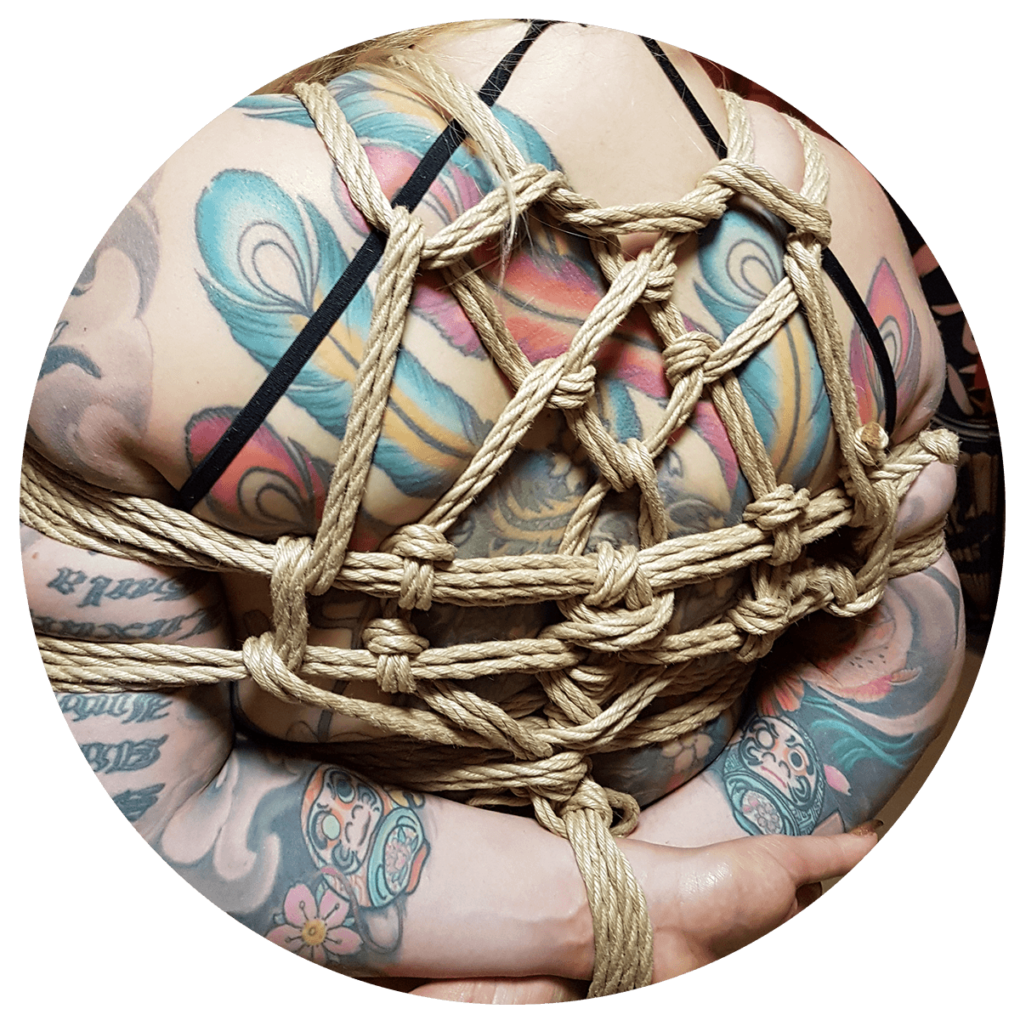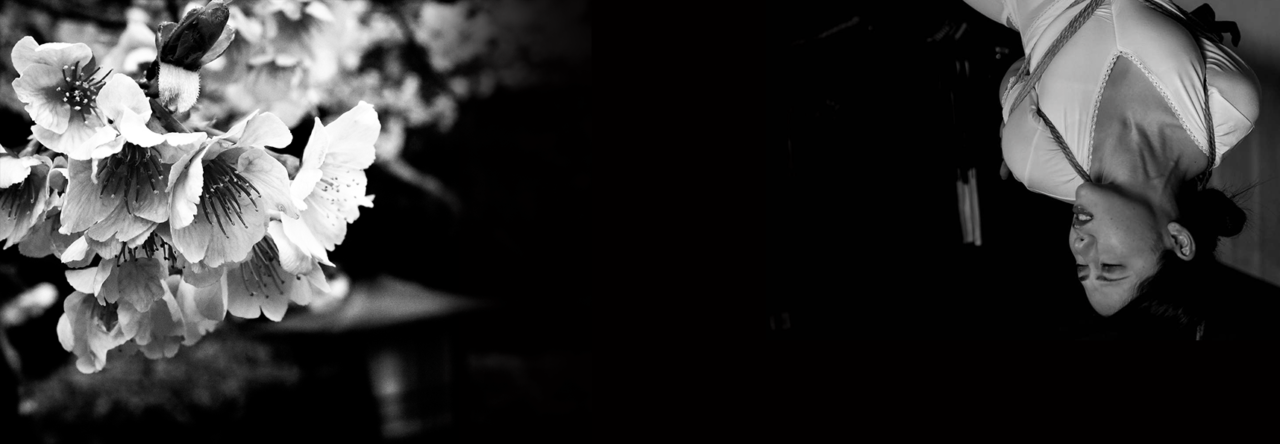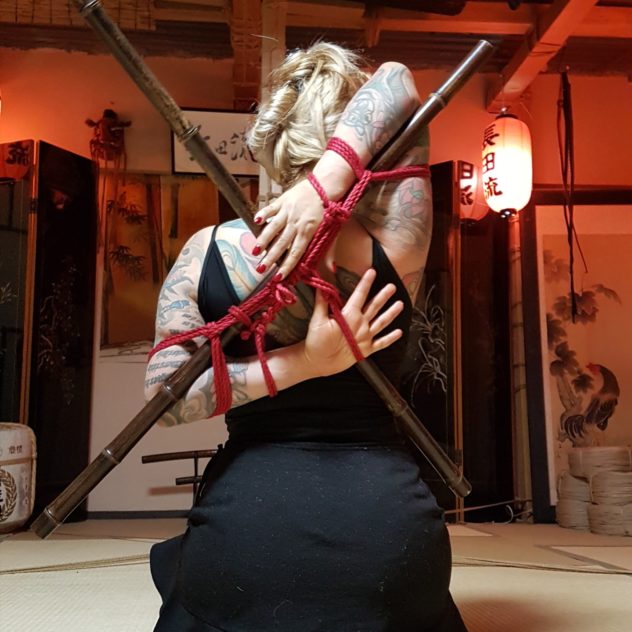Takatekote (高手小手) is the name of a classic shibari pattern. It is one of the most famous and widespread patterns. The forearms are placed at least horizontally on top of each other and tied together with a “single column tie”. Then several layers are wrapped around the torso and fixed at the back. This pattern is taught in almost all schools and always differs in certain points.

The Takatekote (short: TK) contains all the essential basic elements of Shibari. In a way, this pattern is like an alphabet of basic techniques. That is why so much time is spent teaching it. Besides the techniques, it also offers many opportunities to interact with the partner.
It is one of the most stable and refined patterns in shibari. Therefore, the TK is also used for many advanced suspensions and transitions.
Due to the symmetrical structure and because the TK encloses the whole upper body, it is easy to attach decorations (“Kazari”). This makes the Takatekote also a solid base for longer sesssions or performances and can always look different.




